
Lucie Drahoňovská: About Women Architects Then and Now
Source
Helena Doudová, NG Praha
Helena Doudová, NG Praha
Publisher
Tisková zpráva
19.12.2019 11:00
Tisková zpráva
19.12.2019 11:00
Czech Republic
Prague
Holešovice
The 100th anniversary of the founding of the most influential European design school of the 20th century, Bauhaus, is associated with a number of exhibitions and accompanying events. Among them was a two-day symposium Modern Woman—Architect, organized by the National Gallery Prague and the Prague Goethe-Institut at the Veletržní Palace from October 31 to November 1.
During lectures, round tables, panel discussions, and a guided exhibition, leading domestic and foreign experts on architecture and art history reflected on the image and role of the female architect from the early 20th century to the present. They built upon the symposium Emancipation I, which took place in September in Berlin as part of the Bauhaus Week. The focus of the Prague meeting, in the words of curator Helena Doudová from the National Gallery, was “the professional and social emancipation of women in the last hundred years, the projection of the image of 'modern women', and the real fates and professional successes of women architects.” According to her, special attention was paid to “the migration of ideas and the figures associated with them in Central Europe and beyond.”
The First Pioneers of Modernism
The topic Modern Woman—Architect was opened by art historian Mary Pepchinski, author of the recent exhibition Frau Architekt (Mrs. Architect) at the German Museum of Architecture (DAM) in Frankfurt am Main. In her presentation on German female architects of modernism during the Weimar Republic, Emancipated Women, Free Life?, she highlighted the significance of the Weimar Constitution, which guaranteed women certain political rights, a newly acquired access to education, even in previously male-dominated professions. Pepchinski introduced five protagonists of modernism in Germany from 1900 to 1930, including Emilie Winkelmann (who founded her own successful architectural studio in Berlin in 1908 after studying architecture at the Technical University of Hanover), Marie Frommer (who designed houses and interiors in New York after emigrating to the United States), Lotte Cohn (according to E. Lasker-Schüler, “the busiest builder of Israel” since 1921), Lotte-Stamm Beese (who, along with Brno architect Bohuslav Fuchs, realized a number of industrial buildings in Silesia and later her own projects in the Netherlands), and finally the only graduate of architecture at Bauhaus in Dessau, the talented Wera Meyer-Waldeck (whose diploma work was personally endorsed and signed by Mies van der Rohe). According to Pepchinski, these women were united by their desire for emancipation, the transformation of their own ideals, a nomadic lifestyle, and constant experimentation to assert their own emancipation. Furthermore, the fact that these exceptional, creative, intelligent and independent women had to face constant prejudices from society, and that they generally chose a life as Single-Women (with the exception of Stamm-Beese, who became a self-sufficient woman for a time after leaving Bauhaus). The right of married women to work or live freely was conditioned by the consent of their husbands.
Bauhausmädels Then and Now
A fascinating insight into the status of women in the legendary Bauhaus was provided by Patrick Rössler, a German media theorist and co-author of the extensive publication “Bauhausmädels” (TASCHEN 2019). In his contribution “Knows What She Wants – and Also Succeeds,” he pointed out that women in Bauhaus were considered emancipated, even though, despite the school’s progressive approach and gender-equitable access to their education, they had to constantly deal with obstacles unlike their male counterparts. “These girls represented the type 'Bauhausmädels', as the contemporary press referred to them, an artistic version of the so-called 'New Women of the Weimar Republic', who were popular in the 1920s. Young girls in the city led an independent, self-confident life, while rejecting the lifestyle that society demanded of them,” said Rössler. He recalled research by his colleague Anja Baumhoff, according to whom male structures primarily resulted in disadvantages for female students in the Weimar Bauhaus, especially in choosing their workshop freely and having the opportunity to become head of a workshop. In contrast, in Dessau, female students were able to attend various workshops (architecture, sculpture, drawing, carpentry), but most were recommended to the textile and ceramics workshops. Only a few, like Gunta Stölzl, became “young mistresses.” Furthermore, they were also paid less than their male colleagues. “Despite all these deficits, Bauhaus represented, in its social significance, a place for the artistic and personal development of young women from across Europe, who contributed with their work to the global significance of Bauhaus in the design of the 20th century,” summarized Rössler. At the same time, he warned against labeling Bauhaus women as “victims” of their time and advised that gender relations in this art school should be evaluated by the standards of today’s society.
Architects during Socialism
Part of the symposium focused on socialist female architects of the 1960s and 70s in Hungary, Poland, Estonia, and Czechoslovakia. Alongside Věra Machoninová, co-author of the Karlovy Vary hotel complex Thermal and the department store Kotva, the recently deceased Růžena Žertová stood out. The life and work of this esteemed Brno architect, designer of interiors, clothing, jewelry, and lighting, were fundamentally influenced by two key men – architects: her brother Petr Žert and her life partner Igor Svoboda. Among Žertová's most famous projects are the department stores Prior in Pardubice and Košice, and the department store Labe in Ústí nad Labem. Her buildings are characterized by an emphasis on rational operational and structural solutions, while applying a sensitivity to artistic conception and materials.
The current exhibition at Museum Kampa is dedicated to Alena Šrámková, the first lady of Czechoslovak architecture, which was part of the accompanying program of the symposium. The exhibition, which the jubilarian personally assembled based on three-dimensional models, sketches, and designs of realized and unrealized buildings, includes, among others, her most renowned buildings – the postmodern ČKD building in Prague at Můstek, the terminal hall of Prague's Main Railway Station, Tyrš Bridge in Přerov, and the building of the Faculty of Architecture at Czech Technical University in Prague's Dejvice. “Architecture is always a reflection of its creator, and this is strict, rational, precise, unembellished, and truthful architecture. Such is also Mrs. Architect,” said exhibition curator and co-author of the latest publication about this cornerstone of Czech architecture, Radomíra Sedláková, about Šrámková. She highlighted the determination with which Šrámková managed to assert herself in a male environment, as well as the fact that projects were created precisely during collaboration with them. Alena Šrámková's work stands comparison with her leading male neo-rationalist colleagues, architects Oswald Mathias Ungers, Aldo Rossi, and John Hejduk, as one of the co-authors of the book and at the same time curator of the Prague symposium, Helena Doudová, mentioned in her essay on European neo-rationalism.
The article is published with the kind permission of the Goethe-Institut in Prague.
Symposium program - here.
Addendum
After 1930, female students from Czechoslovakia also appeared in the Department of Construction and Architecture at Bauhaus. In addition to Mathylde Wiener and Edith Rindler from Prague, there was also the German Inge Stipanitz from Moravian Ostrava. The connection of Czechoslovak students with Bauhaus was thoroughly mapped by art historian Markéta Svobodová in her publication “Bauhaus and Czechoslovakia 1919-1938” (KANT, 2016). The very first female architect to graduate in the Czech Republic was Milada Petříková-Pavlíková in 1921, who focused on social housing for women according to the German model.
During lectures, round tables, panel discussions, and a guided exhibition, leading domestic and foreign experts on architecture and art history reflected on the image and role of the female architect from the early 20th century to the present. They built upon the symposium Emancipation I, which took place in September in Berlin as part of the Bauhaus Week. The focus of the Prague meeting, in the words of curator Helena Doudová from the National Gallery, was “the professional and social emancipation of women in the last hundred years, the projection of the image of 'modern women', and the real fates and professional successes of women architects.” According to her, special attention was paid to “the migration of ideas and the figures associated with them in Central Europe and beyond.”
The First Pioneers of Modernism
The topic Modern Woman—Architect was opened by art historian Mary Pepchinski, author of the recent exhibition Frau Architekt (Mrs. Architect) at the German Museum of Architecture (DAM) in Frankfurt am Main. In her presentation on German female architects of modernism during the Weimar Republic, Emancipated Women, Free Life?, she highlighted the significance of the Weimar Constitution, which guaranteed women certain political rights, a newly acquired access to education, even in previously male-dominated professions. Pepchinski introduced five protagonists of modernism in Germany from 1900 to 1930, including Emilie Winkelmann (who founded her own successful architectural studio in Berlin in 1908 after studying architecture at the Technical University of Hanover), Marie Frommer (who designed houses and interiors in New York after emigrating to the United States), Lotte Cohn (according to E. Lasker-Schüler, “the busiest builder of Israel” since 1921), Lotte-Stamm Beese (who, along with Brno architect Bohuslav Fuchs, realized a number of industrial buildings in Silesia and later her own projects in the Netherlands), and finally the only graduate of architecture at Bauhaus in Dessau, the talented Wera Meyer-Waldeck (whose diploma work was personally endorsed and signed by Mies van der Rohe). According to Pepchinski, these women were united by their desire for emancipation, the transformation of their own ideals, a nomadic lifestyle, and constant experimentation to assert their own emancipation. Furthermore, the fact that these exceptional, creative, intelligent and independent women had to face constant prejudices from society, and that they generally chose a life as Single-Women (with the exception of Stamm-Beese, who became a self-sufficient woman for a time after leaving Bauhaus). The right of married women to work or live freely was conditioned by the consent of their husbands.
Bauhausmädels Then and Now
A fascinating insight into the status of women in the legendary Bauhaus was provided by Patrick Rössler, a German media theorist and co-author of the extensive publication “Bauhausmädels” (TASCHEN 2019). In his contribution “Knows What She Wants – and Also Succeeds,” he pointed out that women in Bauhaus were considered emancipated, even though, despite the school’s progressive approach and gender-equitable access to their education, they had to constantly deal with obstacles unlike their male counterparts. “These girls represented the type 'Bauhausmädels', as the contemporary press referred to them, an artistic version of the so-called 'New Women of the Weimar Republic', who were popular in the 1920s. Young girls in the city led an independent, self-confident life, while rejecting the lifestyle that society demanded of them,” said Rössler. He recalled research by his colleague Anja Baumhoff, according to whom male structures primarily resulted in disadvantages for female students in the Weimar Bauhaus, especially in choosing their workshop freely and having the opportunity to become head of a workshop. In contrast, in Dessau, female students were able to attend various workshops (architecture, sculpture, drawing, carpentry), but most were recommended to the textile and ceramics workshops. Only a few, like Gunta Stölzl, became “young mistresses.” Furthermore, they were also paid less than their male colleagues. “Despite all these deficits, Bauhaus represented, in its social significance, a place for the artistic and personal development of young women from across Europe, who contributed with their work to the global significance of Bauhaus in the design of the 20th century,” summarized Rössler. At the same time, he warned against labeling Bauhaus women as “victims” of their time and advised that gender relations in this art school should be evaluated by the standards of today’s society.
Architects during Socialism
Part of the symposium focused on socialist female architects of the 1960s and 70s in Hungary, Poland, Estonia, and Czechoslovakia. Alongside Věra Machoninová, co-author of the Karlovy Vary hotel complex Thermal and the department store Kotva, the recently deceased Růžena Žertová stood out. The life and work of this esteemed Brno architect, designer of interiors, clothing, jewelry, and lighting, were fundamentally influenced by two key men – architects: her brother Petr Žert and her life partner Igor Svoboda. Among Žertová's most famous projects are the department stores Prior in Pardubice and Košice, and the department store Labe in Ústí nad Labem. Her buildings are characterized by an emphasis on rational operational and structural solutions, while applying a sensitivity to artistic conception and materials.
The current exhibition at Museum Kampa is dedicated to Alena Šrámková, the first lady of Czechoslovak architecture, which was part of the accompanying program of the symposium. The exhibition, which the jubilarian personally assembled based on three-dimensional models, sketches, and designs of realized and unrealized buildings, includes, among others, her most renowned buildings – the postmodern ČKD building in Prague at Můstek, the terminal hall of Prague's Main Railway Station, Tyrš Bridge in Přerov, and the building of the Faculty of Architecture at Czech Technical University in Prague's Dejvice. “Architecture is always a reflection of its creator, and this is strict, rational, precise, unembellished, and truthful architecture. Such is also Mrs. Architect,” said exhibition curator and co-author of the latest publication about this cornerstone of Czech architecture, Radomíra Sedláková, about Šrámková. She highlighted the determination with which Šrámková managed to assert herself in a male environment, as well as the fact that projects were created precisely during collaboration with them. Alena Šrámková's work stands comparison with her leading male neo-rationalist colleagues, architects Oswald Mathias Ungers, Aldo Rossi, and John Hejduk, as one of the co-authors of the book and at the same time curator of the Prague symposium, Helena Doudová, mentioned in her essay on European neo-rationalism.
The article is published with the kind permission of the Goethe-Institut in Prague.
Symposium program - here.
Addendum
After 1930, female students from Czechoslovakia also appeared in the Department of Construction and Architecture at Bauhaus. In addition to Mathylde Wiener and Edith Rindler from Prague, there was also the German Inge Stipanitz from Moravian Ostrava. The connection of Czechoslovak students with Bauhaus was thoroughly mapped by art historian Markéta Svobodová in her publication “Bauhaus and Czechoslovakia 1919-1938” (KANT, 2016). The very first female architect to graduate in the Czech Republic was Milada Petříková-Pavlíková in 1921, who focused on social housing for women according to the German model.
The English translation is powered by AI tool. Switch to Czech to view the original text source.
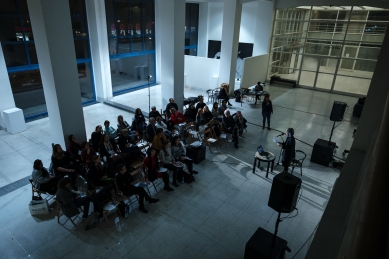
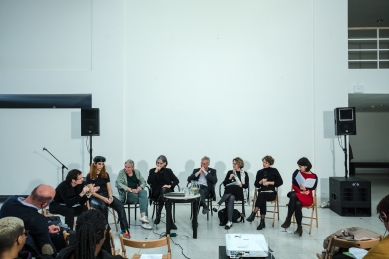
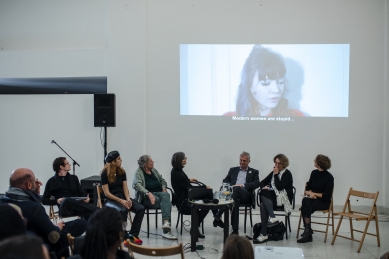
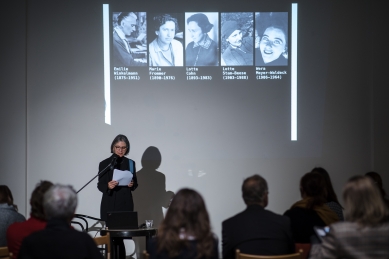
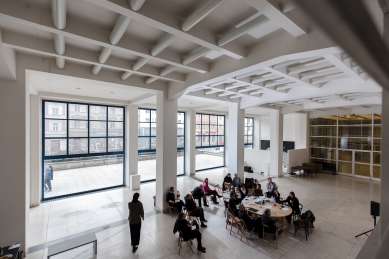
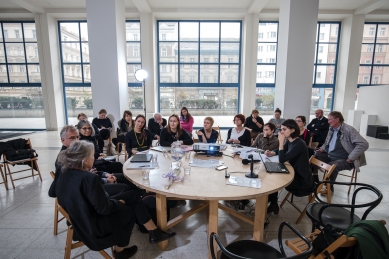
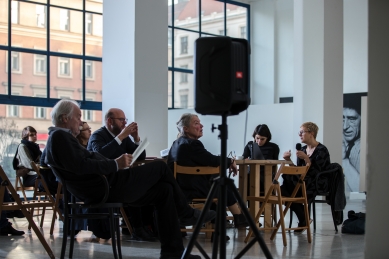
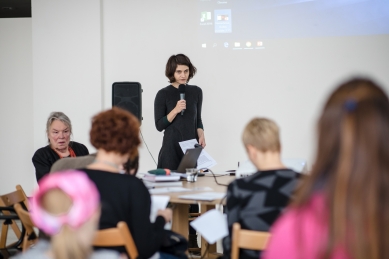
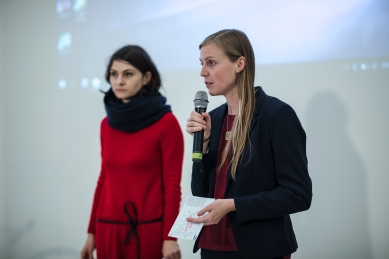
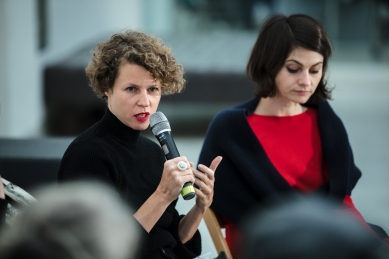
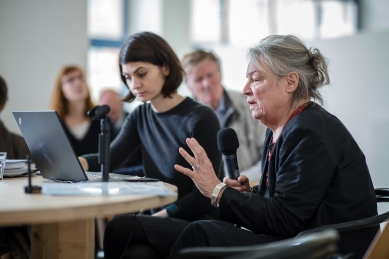
0 comments
add comment






